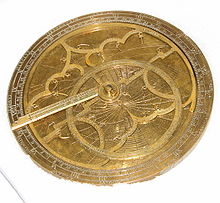
by Faith Justice | Aug 18, 2010 | History, History in the News
History in the News:
Pyroclastic Clouds, Dead Dogs, and Ads on the Coliseum
As I’ve said on my About page, I’m a history junkie and science geek. I love the intersection of these two disciplines: DNA markers that trace humankind’s exodus from Africa, isotope analysis of teeth and bones that tell us where and when ancient people grew up and what they ate, UV light to fluoresce bones and fingerprints on artifacts, and much more. Over half of my “history in the news” stories this round up have a major science component–from what really killed people in Pompeii to discovering a “lost” Roman city from aerial photographs to where the Dead Sea Scrolls were manufactured. You can click on the links to see the original stories. We’ll start with Pompeii.
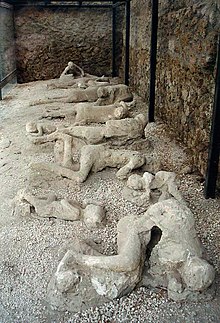 Most historians and archaeologists believed the people at Pompeii, who where not killed by spewing rocks, died of suffocation from ash and poisonous gas. Pliny the Younger described the process in letters written 25 years later. Giuseppe Mastrolorenzo, a vulcanologist from the Naples Observatory claims “Everything that has been written in the guides, and the texts, and that has been re-told to tourists [about how people died at Pompeii] is false.” He spent years analyzing skeletal casts, testing bone tissue and simulating Vesuvius eruptions. He published his findings in the science journal PLoS One. Mastrolorenzo concludes that the people of Pompeii were instantly killed by a pyroclastic cloud, a surge of super-heated air. He also proved these high temperatures can be carried up to 12 miles away from the volcano. The Italian Civil Protection requires only those people living five miles from Vesuvius to evacuate, which puts 3 million people in and around Naples in harm’s way, in case of another eruption.
Most historians and archaeologists believed the people at Pompeii, who where not killed by spewing rocks, died of suffocation from ash and poisonous gas. Pliny the Younger described the process in letters written 25 years later. Giuseppe Mastrolorenzo, a vulcanologist from the Naples Observatory claims “Everything that has been written in the guides, and the texts, and that has been re-told to tourists [about how people died at Pompeii] is false.” He spent years analyzing skeletal casts, testing bone tissue and simulating Vesuvius eruptions. He published his findings in the science journal PLoS One. Mastrolorenzo concludes that the people of Pompeii were instantly killed by a pyroclastic cloud, a surge of super-heated air. He also proved these high temperatures can be carried up to 12 miles away from the volcano. The Italian Civil Protection requires only those people living five miles from Vesuvius to evacuate, which puts 3 million people in and around Naples in harm’s way, in case of another eruption.
(more…)
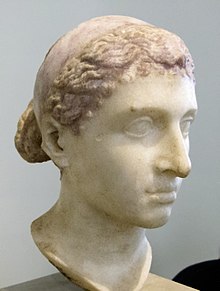
by Faith Justice | Jul 18, 2010 | History, History in the News
History in the News:
Bones, Poison, and Treasure

Bust of Cleopatra VII in Berlin
I’ll be doing a regular round up of archaeology and history stories that make it into the mainstream press every couple of weeks with links to the original stories. The focus will be on Roman history, but anything that catches my fancy will be fair game. This post features several finds in Britain including a hoard of coins, a controversial skeleton initially thought to be a female gladiator, and the graves of 97 infants; Roman frescoes, canals and looted artifacts; and renewed speculation over Cleopatra’s death. Snakebite or poison?
I don’t know if it’s because the stories are printed in English, Britain has an abundance of archaeologists and amateur treasure hunters, or some other fluke of randomness, but fully half the stories that caught my attention this round up are from Britain. We’ll start with the bones and end with the treasure.
In Caistor (from the Anglo-Saxon ceaster meaning Roman camp or town), archaeologists have discovered a large, well-organized late Roman cemetery. They’ve recovered 46 sets of human remains from the site of the derelict Talbot Inn which is being redeveloped into a Lincolnshire cooperative food store. The remains – including complete skeletons – will be studied and reburied. Colin Palmer-Brown, Director of the Pre-Construction Archaeological Services Ltd team overseeing the site believes there are “hundreds if not thousands of people buried in this part of Caistor.”
(more…)
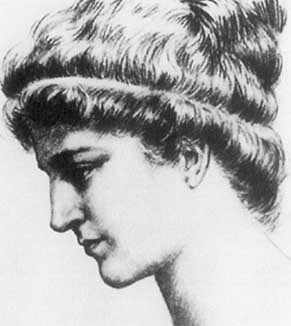
by Faith Justice | Jun 8, 2010 | Agora, Essays/Research, History, Hypatia, Movies, Reviews, Wonderful Women
Agora: the “Reel” vs. the “Real” Hypatia – Part III
 In Parts I & II of this series on the history behind the movie, I talked about several major historical events of the times and a couple of my favorite anecdotes that made it into the film. In Part III, I’ll look at the major characters, how they were portrayed in the film and what we know about their real lives. Because I’ve written so extensively about Hypatia (essays, guest blogs, a novel, and a non-fiction book) I’ll save her for last. (more…)
In Parts I & II of this series on the history behind the movie, I talked about several major historical events of the times and a couple of my favorite anecdotes that made it into the film. In Part III, I’ll look at the major characters, how they were portrayed in the film and what we know about their real lives. Because I’ve written so extensively about Hypatia (essays, guest blogs, a novel, and a non-fiction book) I’ll save her for last. (more…)

by Faith Justice | Jun 3, 2010 | Agora, Essays/Research, History, Hypatia, Movies, Reviews, Wonderful Women
Agora: the “Reel” vs. the “Real” Hypatia – Part II
 In Part I of this series, I talked about some of the controversy surrounding this film and dealt with a few of the historical events depicted: the fire-walking Christian, Hypatia’s science and students, and (one of my favorite stories) the bloody handkerchief. In Part II, I continue with the events depicted in the movie including the destruction of the Temple of Serapis and the Great Library, the expulsion of the Jews from Alexandria, and Hypatia’s murder. In Part III, I’ll deal with the characters. Again, for those who haven’t seen the movie – spoilers! (more…)
In Part I of this series, I talked about some of the controversy surrounding this film and dealt with a few of the historical events depicted: the fire-walking Christian, Hypatia’s science and students, and (one of my favorite stories) the bloody handkerchief. In Part II, I continue with the events depicted in the movie including the destruction of the Temple of Serapis and the Great Library, the expulsion of the Jews from Alexandria, and Hypatia’s murder. In Part III, I’ll deal with the characters. Again, for those who haven’t seen the movie – spoilers! (more…)

by Faith Justice | Jun 1, 2010 | Agora, Essays/Research, History, Hypatia, Movies, Reviews, Wonderful Women
Agora: the “Reel” vs. the “Real” Hypatia – Part I
 Finally! The movie Agora starring Rachel Weisz as Hypatia, the Lady Philosopher of Alexandria made it to the US shores. I’ve been following the controversy around this film for several months. Alejandro Amenábar wrote (with Mateo Gil) and directed this English language film with an international cast. Because it shows early Christians as intolerant and murderous, it kicked up some dust in Catholic European countries. There was even some talk about whether it would make it across the pond. In New York City, it is only in two “art house” theaters, hardly a major release, but it did garner a “critics’ choice” designation by the New York Times.
Finally! The movie Agora starring Rachel Weisz as Hypatia, the Lady Philosopher of Alexandria made it to the US shores. I’ve been following the controversy around this film for several months. Alejandro Amenábar wrote (with Mateo Gil) and directed this English language film with an international cast. Because it shows early Christians as intolerant and murderous, it kicked up some dust in Catholic European countries. There was even some talk about whether it would make it across the pond. In New York City, it is only in two “art house” theaters, hardly a major release, but it did garner a “critics’ choice” designation by the New York Times.
But, why was I excited? Because the movie is about my people and my events; characters and times I’ve studied and lived with for over twenty years; characters and events featured in my book Selene of Alexandria. Normally, I’ll go to a historical movie with some relish, but this time it was with eager anticipation and some trepidation. Would the writers/director get it right—the setting, the politics, my beloved characters? And here’s the answer: big picture yes, details no. For the record, this is not a movie review. I’ll leave the assessment of Agora’s worth as a piece of art to others. For those who haven’t seen the movie, there are spoilers. But if you know the story of Hypatia, you basically know the movie plot. What I talk about is the history behind the movie-what the writers/director got right and what (in my opinion) they got wrong. (more…)
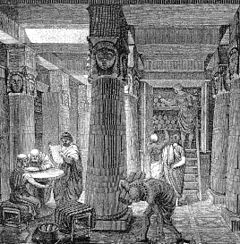
by fljustice | May 8, 2010 | Essays/Research, History, Hypatia
Burning Books: What Really Happened to the Great Library of Alexandria

19C illustration of the Great Library
The Great Library of Alexandria conjures images of bearded scholars strolling marble halls, studying rolls of papyri at large wooden tables, or arguing with colleagues under covered walkways. The loss of “the world’s knowledge” through wanton destruction is a metaphor for the coming of the Dark Ages in Europe. But what was the Great Library really and how was it destroyed? (more…)

 Most historians and archaeologists believed the people at Pompeii, who where not killed by spewing rocks, died of suffocation from ash and poisonous gas. Pliny the Younger described the process in letters written 25 years later. Giuseppe Mastrolorenzo, a vulcanologist from the Naples Observatory claims “Everything that has been written in the guides, and the texts, and that has been re-told to tourists [about how people died at Pompeii] is false.” He spent years analyzing skeletal casts, testing bone tissue and simulating Vesuvius eruptions. He published his findings in the science journal PLoS One. Mastrolorenzo concludes that the people of Pompeii were instantly killed by a pyroclastic cloud, a surge of super-heated air. He also proved these high temperatures can be carried up to 12 miles away from the volcano. The Italian Civil Protection requires only those people living five miles from Vesuvius to evacuate, which puts 3 million people in and around Naples in harm’s way, in case of another eruption.
Most historians and archaeologists believed the people at Pompeii, who where not killed by spewing rocks, died of suffocation from ash and poisonous gas. Pliny the Younger described the process in letters written 25 years later. Giuseppe Mastrolorenzo, a vulcanologist from the Naples Observatory claims “Everything that has been written in the guides, and the texts, and that has been re-told to tourists [about how people died at Pompeii] is false.” He spent years analyzing skeletal casts, testing bone tissue and simulating Vesuvius eruptions. He published his findings in the science journal PLoS One. Mastrolorenzo concludes that the people of Pompeii were instantly killed by a pyroclastic cloud, a surge of super-heated air. He also proved these high temperatures can be carried up to 12 miles away from the volcano. The Italian Civil Protection requires only those people living five miles from Vesuvius to evacuate, which puts 3 million people in and around Naples in harm’s way, in case of another eruption.


